There’s something magical about hiking in freshly fallen snow. The world feels quieter, the air sharper, and familiar trails look like they’ve been transformed into an entirely new landscape. The crunch of each step, the way your breath hangs in the air, the sparkle of frost on tree branches — winter hiking can be a truly special experience.
But before you lace up and head for the white hills, there’s one big question on many hikers’ minds: Are hiking boots good for snow?
It’s a fair question — winter hiking isn’t just “normal hiking but colder.” Snow brings a whole new set of challenges: dampness that seeps into every gap, slippery ice hidden beneath a fresh dusting, and temperatures that can make your toes feel like they belong to someone else. Not all footwear stands up to that test.
Yes — hiking boots can be good for snow if they are waterproof, insulated, and paired with the right socks, gaiters, and traction devices. In light to moderate winter conditions, they can keep your feet warm and dry. But for deep snow or extreme cold, you may be better off with dedicated snow boots.
In this guide, we’ll unpack when hiking boots shine in snowy conditions, when they fall short, and the essential features (plus a few clever add-ons) that will keep your feet warm, dry, and safe. Whether you’re planning a gentle winter walk or a snowy mountain adventure, by the end you’ll know exactly what your boots can handle — and how to get the very best out of them.
Contents:
- Understanding Winter Hiking Conditions
- When Hiking Boots Work Well in Snow
- When Hiking Boots Fall Short
- Essential Features for Snow-Capable Hiking Boots
- How to Make Hiking Boots Snow-Ready
- Hiking Boots vs Snow Boots
- Winter Hiking Safety Tips
- Final Thoughts
Understanding Winter Hiking Conditions
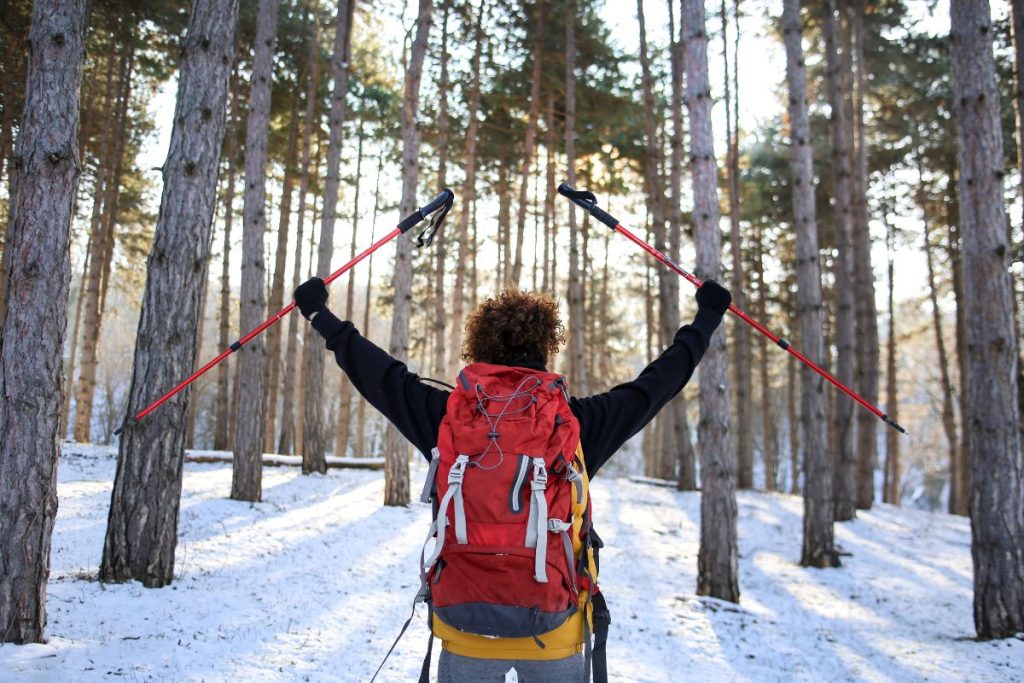
The first step onto a snowy trail feels different. The crunch underfoot, the muffled quiet as the snow absorbs sound, the way light bounces off the white landscape — it’s beautiful, but it’s also deceptive. Winter hiking may look serene, but it comes with its own set of challenges.
Snow changes everything about the trail. Even a familiar route you’ve walked a hundred times can become unpredictable under winter’s touch. Light snow on a packed path might feel straightforward, but venture into deep powder, icy ridges, or slushy meltwater, and suddenly every step takes more effort and demands more attention.
Moisture is your biggest enemy. Melting snow can soak into your boots within minutes if they’re not waterproof. Temperatures can drop quickly, making thin or uninsulated boots feel like blocks of ice around your feet. Ice patches and compacted snow bring the added hazard of slips and falls, which can turn a winter walk into a rescue situation faster than you’d think.
In the UK and Europe, winter hiking conditions can swing dramatically in a single day — from crisp, frozen ground to heavy, wet snow and back again. In parts of North America, winter might mean a short hike through light flurries… or tackling alpine conditions with biting wind and deep drifts.
Understanding the type of snow and terrain you’re heading into is key to deciding whether your hiking boots will cut it, or whether you’ll need to upgrade your gear for the day.
Further reading: The National Park Service Winter Hiking Tips offer a solid foundation for preparing for snowy conditions in national parks and beyond.
When Hiking Boots Work Well in Snow
Not all snow is created equal — and not all winter hikes demand heavy-duty snow boots. In the right conditions, your trusty hiking boots can perform brilliantly, keeping your feet warm, dry, and comfortable without weighing you down.
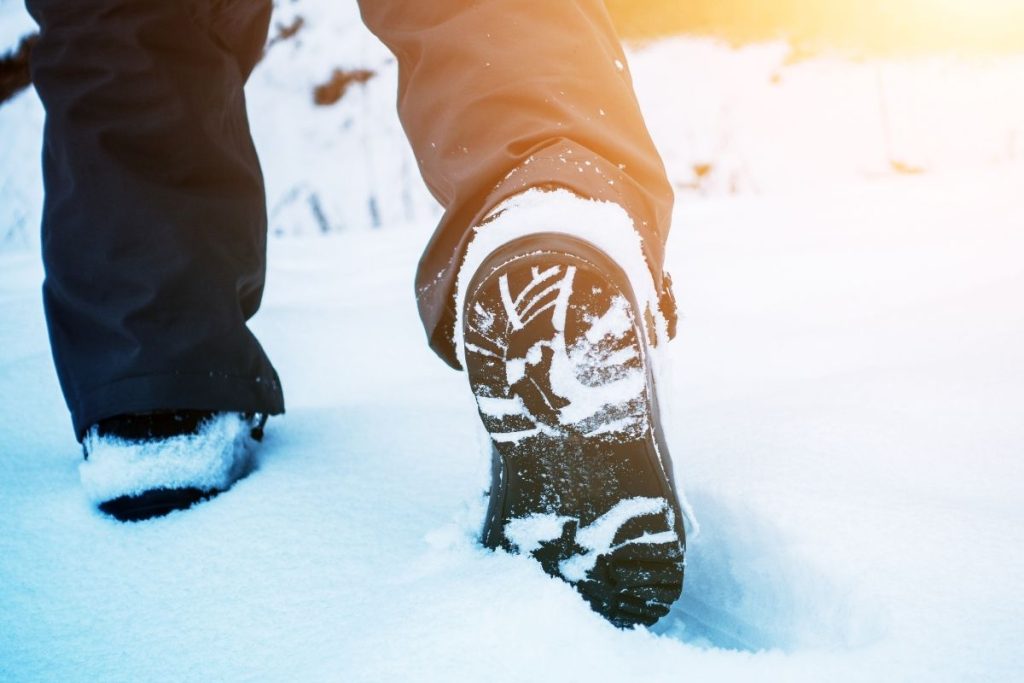
Hiking boots are a great choice when:
- You’re walking in light to moderate snow — especially on compacted or well-travelled trails. This could mean fresh powder that’s only a few inches deep, or snow that’s been packed down by other hikers or snowshoers.
- Your boots are fully waterproof thanks to a membrane like Gore-Tex, eVent, or a high-quality leather treatment. This barrier is your main defence against melting snow soaking into the boot.
- You’ve got high-cut boots that cover and support your ankles. This doesn’t just offer stability — it also helps keep snow from sneaking in over the top.
- Your tread is aggressive enough to bite into snow and slush, giving you grip without the need for extra traction devices (though microspikes are always a smart safety add-on on icy sections).
- You wear the right socks. Thick, moisture-wicking socks — especially merino wool — act as both insulation and moisture managers, keeping your feet warm while drawing sweat away from your skin.
Pro tip: Pairing your hiking boots with gaiters is a game changer in snowy conditions. Even a light layer of snow can creep into your boots with every step. Gaiters create a seal between your boots and your trousers, blocking snow, slush, and debris before it can get inside.
Bonus benefit: Hiking boots are often more comfortable for long distances than heavy snow boots, and they’ll break in more easily. If your winter hikes are moderate in distance and not in extreme conditions, you can save money (and weight on your feet) by using the boots you already own — with the right tweaks.
When Hiking Boots Fall Short
As capable as hiking boots are, there comes a point in winter when even the best pair isn’t enough. Snow can be unforgiving, and knowing your boots’ limits is just as important as knowing their strengths.
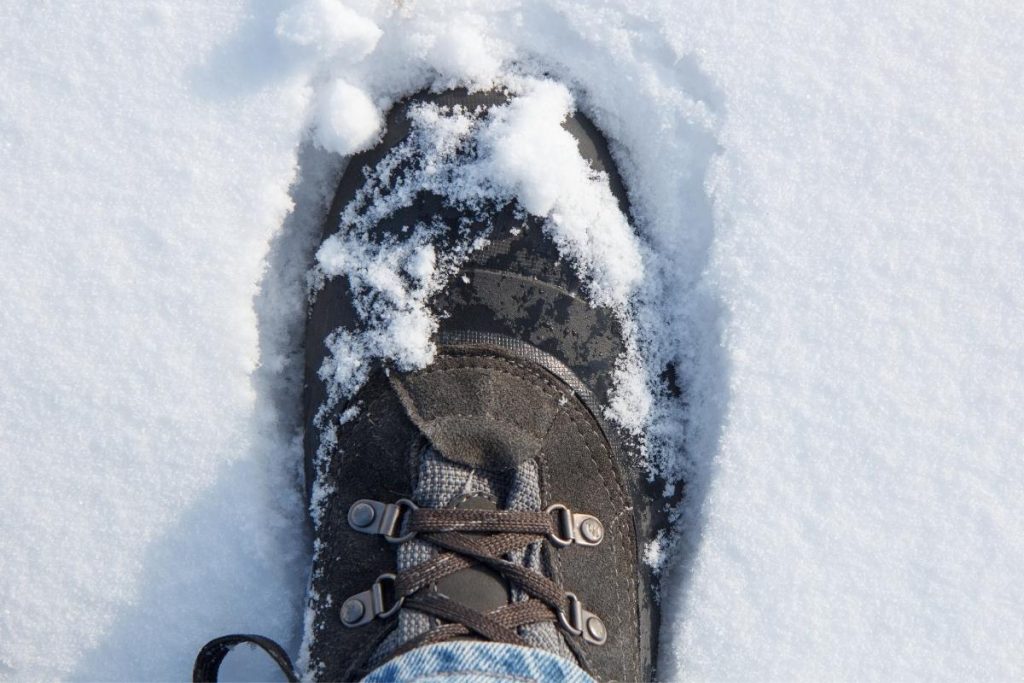
Here are the main situations where hiking boots start to fall short:
- Deep snow without gaiters: Once snow is higher than your boot cuff, it’s only a matter of time before it seeps in. Even waterproof boots can’t help if snow is constantly spilling in over the top. A pair of gaiters will delay the inevitable, but for anything over shin-deep powder, snow boots or snowshoes are far more effective.
- Extreme cold without insulation: A standard waterproof boot relies heavily on your socks to provide warmth. That works fine for UK or central European winters, but in sub-zero temperatures (think –10°C / 14°F and below), you’ll feel the chill fast. Cold feet aren’t just uncomfortable — prolonged exposure can lead to frostnip or frostbite. In fact, according to the CDC, “frostbite can begin after just 30 minutes of exposure in freezing temperatures when skin is damp“.
- Icy or compacted trails: Hiking boots offer grip, but they’re not miracle workers on sheer ice. Without traction devices like microspikes or crampons, a slip is almost guaranteed at some point. A 2020 study in the Wilderness & Environmental Medicine Journal highlighted that falls are among the top causes of winter hiking injuries — most linked to slippery surfaces.
- Multi-day hikes without proper drying: Once hiking boots get wet in sub-zero conditions, drying them out on the trail can be nearly impossible. Unlike snow boots with removable liners, hiking boots tend to trap moisture. Start day two of a trek with damp boots in freezing weather, and your comfort (and safety) nosedives quickly.
And here’s a less obvious one: fit issues are magnified in the cold. Thick winter socks can make snug boots too tight, restricting circulation, while roomy boots may lead to sliding and blisters. If you’re struggling with this, we’ve written a detailed guide on What to Do If Your Hiking Boots Are Too Big that also applies to winter conditions.
Key takeaway: Hiking boots are fantastic for short winter walks, light snow, and moderate cold — but for deep snow, multi-day treks, or extreme cold, they’re a compromise at best. If your route involves prolonged exposure to sub-zero conditions, investing in proper winter footwear isn’t just a luxury — it’s a safety decision.
Essential Features for Snow-Capable Hiking Boots
Not all hiking boots are equal when it comes to snowy trails. If you want your boots to perform well in winter, there are certain features you’ll want to look out for — or add on if your current boots don’t already have them. Here’s what really makes the difference:
1. Waterproofing
Snow is basically frozen water — and once it melts, it will find its way into every seam and stitch. A good waterproof membrane (such as Gore-Tex, eVent, or KEEN.DRY) is essential for keeping your feet dry.
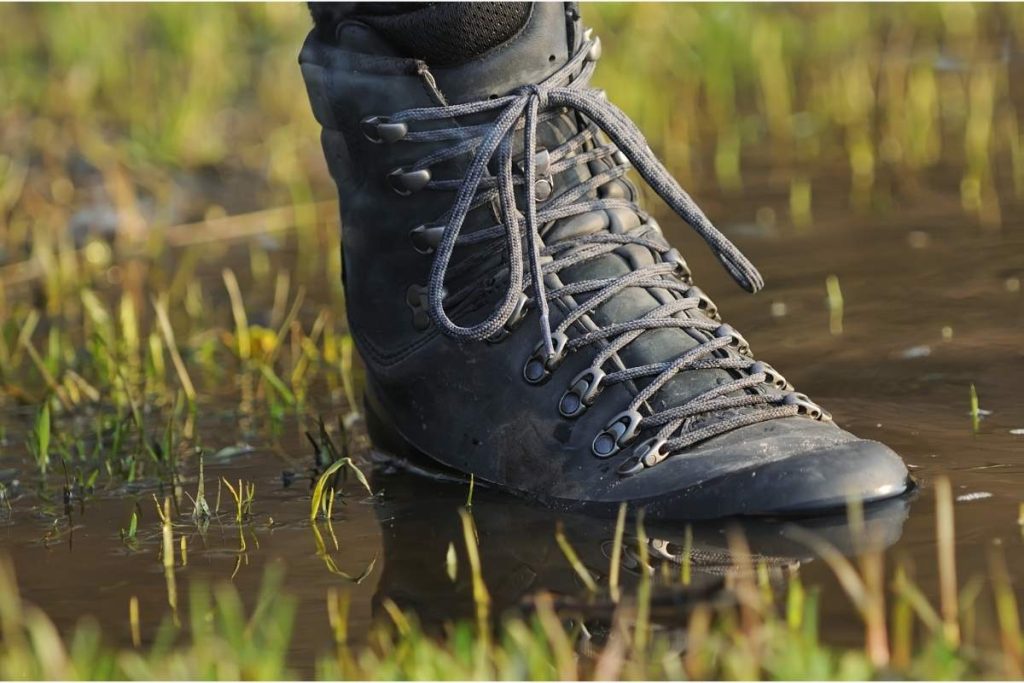
- Top tip: Even waterproof boots need upkeep. Reapply a durable water repellent (DWR) treatment every few months (brands like Nikwax or Grangers are excellent choices). This keeps the outer fabric from becoming waterlogged, which can lead to cold feet even if no water seeps inside.
2. Insulation
Waterproofing alone won’t keep your toes warm — you’ll need insulation for that. Look for boots lined with materials like Thinsulate or Primaloft, which trap heat without adding too much bulk.
- Mild winters (UK, Central Europe): Lightweight insulation (200g) paired with thick merino socks may be plenty.
- Harsh winters (Northern US, Canada, Alps): Go for heavier insulation (400g–600g) to avoid numb toes on long hikes.
Remember: too much insulation can overheat your feet on milder days, so match the insulation level to the conditions you’ll face most often.
3. Grip and Traction
Slipping on icy trails is one of the biggest risks in winter hiking. Boots with aggressive lug patterns (deep, widely spaced tread) and winter-rated rubber compounds (which stay grippy in cold temps) make a big difference.
- For light snow and slush, standard Vibram soles often do well.
- On compacted snow or ice, you’ll want to add microspikes (Kahtoola Microspikes are a favorite among winter hikers).
4. Ankle Support
Snow hides uneven terrain. A misstep into a hidden hole or drift can twist an ankle fast. Boots with higher ankle collars and firm support reduce this risk, giving you the stability you’ll need when conditions are unpredictable.
5. Removable or Thermal Insoles
Cold often creeps in from the ground up. Swapping your standard insoles for thermal insoles (such as Superfeet WINTER Comfort) can add noticeable warmth. Removable insoles also make drying your boots faster at the end of the day — crucial for multi-day snow hikes.
6. Gaiter Compatibility
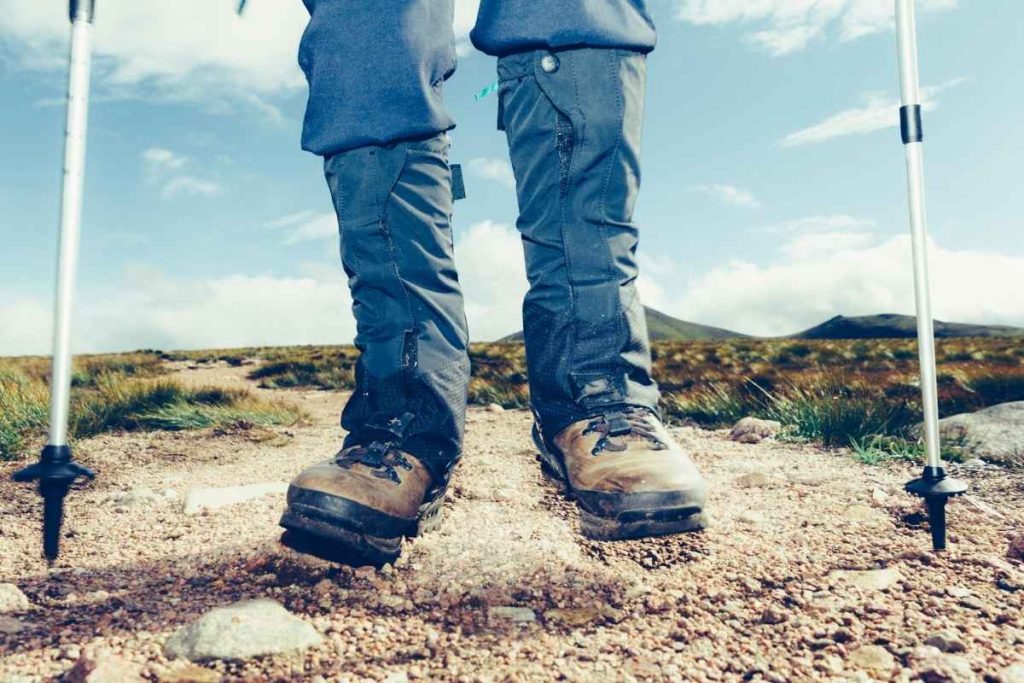
This isn’t built into the boot, but it’s worth noting: look for boots with a firm ankle collar and eyelets/hooks that allow gaiters to seal tightly. Gaiters are a game-changer for snowy hikes, keeping slush and snow from creeping in over the top.
Further reading: Decathlon’s Guide to Choosing Winter Boots goes into even more detail if you’re considering upgrading or buying a winter-specific pair.
Key takeaway: The best winter hiking boots aren’t necessarily the heaviest or most insulated — they’re the ones that balance waterproofing, warmth, grip, and support to match the conditions you’ll actually face. Add a pair of gaiters and traction devices, and your regular boots might be all you need for most snowy adventures.
How to Make Hiking Boots Snow-Ready
The good news? You don’t need to buy an entirely new pair of boots to enjoy snowy trails. With the right tweaks and add-ons, you can “winterize” your existing hiking boots and dramatically improve their performance in cold, wet conditions. Here’s how:
1. Refresh the Waterproofing
Even the best waterproof boots lose effectiveness over time as their outer fabric absorbs water. Reapply a durable water repellent (DWR) spray or wax to restore protection.
- Recommended products:
Spray lightly and evenly, then let your boots dry fully before use. This simple step can stop boots from becoming heavy and soggy in snow. If you’re interested in applying a water repellent spray or wax to your boots then I’d highly recommend checking out the video below:
2. Upgrade Your Insoles
Cold often seeps in from the ground. Replacing standard insoles with thermal or insulating insoles adds an extra layer of defense.
Besides warmth, these insoles also improve support — helpful when you’re hiking on uneven, frozen terrain.
3. Wear High-Quality Socks
Your socks are just as important as your boots. Choose merino wool socks, which are naturally antimicrobial (reducing odor) and regulate temperature better than cotton or synthetics.
- In milder snowy conditions, midweight merino socks are usually enough.
- For deep winter hikes, consider layering with a thin liner sock beneath a thicker merino pair.
For more on this, check out our article: Do Hiking Socks Make a Difference?
4. Add Gaiters
Snow creeping in from the top of your boots is a recipe for cold, wet feet. Gaiters form a seal around your ankles and calves to keep snow, slush, and even rain out.
- Popular picks:
- Outdoor Research Crocodile Gaiters (heavy-duty, mountaineering-level)
- Berghaus Unisex Gore-Tex II (lightweight but durable)
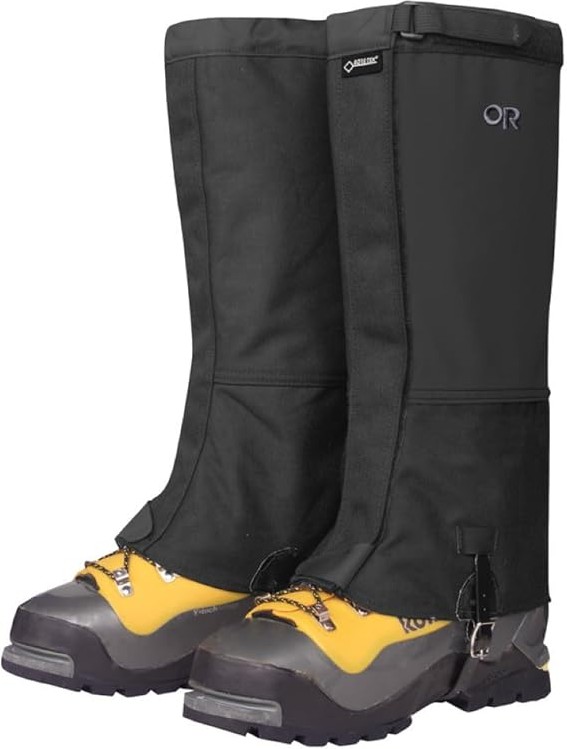
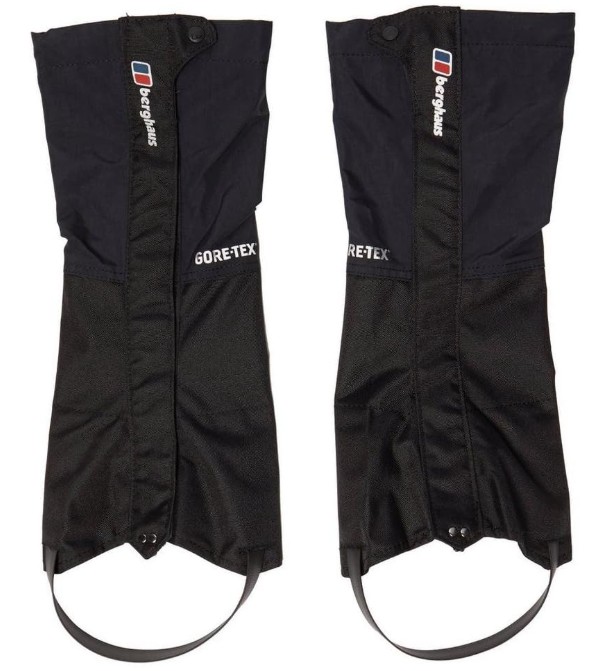
They’re one of the simplest upgrades you can make — and they make a massive difference in snow.
5. Boost Traction with Microspikes
Ice is the real villain of winter hiking. Even boots with aggressive tread will struggle on compacted snow or sheer ice. A pair of microspikes or trail crampons fits over your boots to give you grip and stability.
- Examples:
- Kahtoola Microspikes
- Hillsound Trail Crampons
They’re lightweight, easy to carry, and can turn a slippery, risky trail into a safe and enjoyable one.
6. Dry Boots Thoroughly After Every Hike
Snow equals moisture, and moisture trapped in your boots will quickly lead to odor and even material breakdown. After each hike:
- Remove the insoles.
- Loosen the laces fully.
- Dry boots in a well-ventilated area, away from direct heat (which can crack leather).
If you want more on this, see our guide on How to Make Hiking Boots Smell Better.
Key takeaway: A few simple upgrades — waterproofing treatments, better socks, thermal insoles, gaiters, and microspikes — can transform regular hiking boots into snow-ready winter performers. For most hikers in moderate conditions, this will be all you need to stay warm, dry, and safe.
Hiking Boots vs Snow Boots
When winter rolls in, many hikers face the same dilemma: Do I stick with my trusty hiking boots, or invest in a pair of dedicated snow boots? The answer depends on where you’re hiking, how cold it gets, and how much snow you’ll encounter.
Hiking Boots
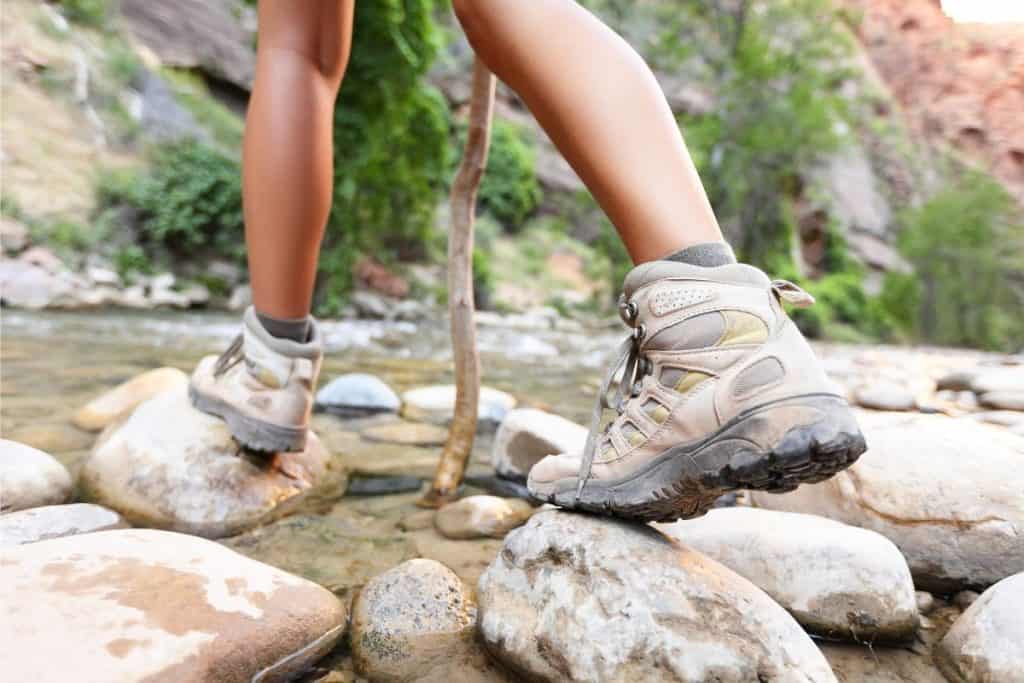
Pros:
- Versatility: Hiking boots are built for year-round use. With the right socks, gaiters, and traction add-ons, they can handle everything from autumn drizzle to light winter snow.
- Comfort over distance: Designed for long treks, they’re generally lighter and more supportive for covering miles on foot.
- Breathability: Hiking boots (especially those with modern membranes) balance waterproofing with breathability better than most snow boots.
Cons:
- Limited insulation: Unless they’re a winter-specific model, most hiking boots rely on socks for warmth. In sub-zero temperatures, this may not be enough.
- Snow creep: Without gaiters, snow easily gets in over the top.
- Slippery on ice: Even aggressive tread patterns struggle on compacted snow or ice without microspikes.
Best for: Occasional winter hikes, light to moderate snow, or hikers who want one boot for all seasons.
Snow Boots
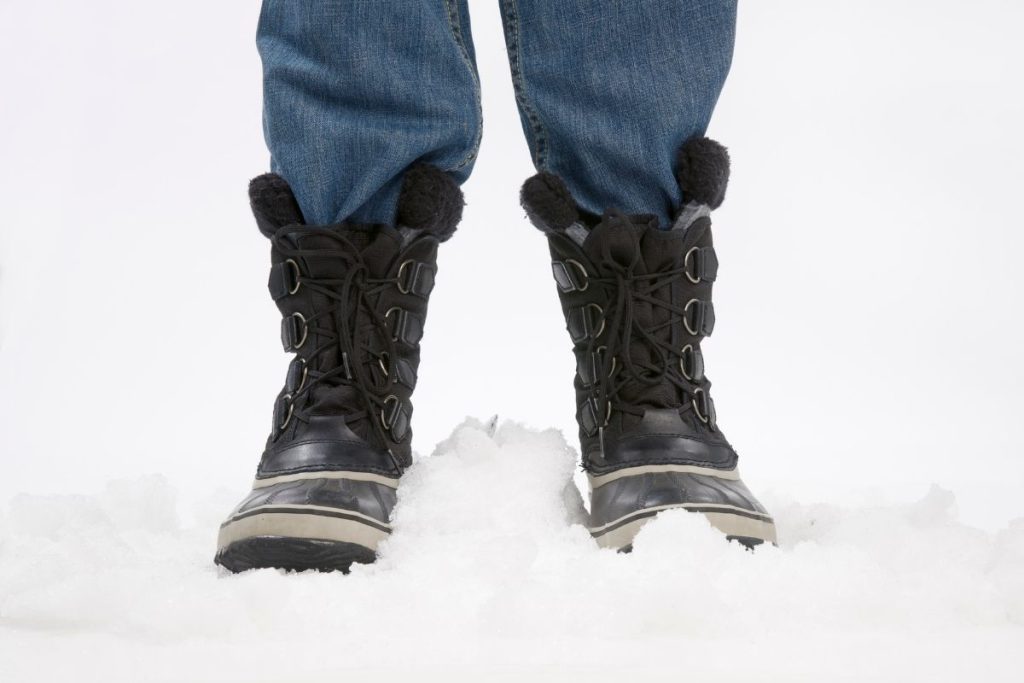
Pros:
- Warmth: Built with insulation (like Thinsulate or shearling), snow boots excel at keeping toes warm in extreme cold.
- Snow protection: Many come with built-in gaiter systems or tall shafts to keep deep snow out.
- Slip resistance: Outsoles are often designed specifically for snow and ice.
Cons:
- Heavy & bulky: Snow boots are usually less comfortable for long-distance hikes.
- Less breathable: Great for frigid conditions, but your feet may overheat in milder weather.
- Not as versatile: You’ll rarely wear them outside of snowy or icy conditions.
Best for: Deep snow, extended exposure to sub-zero temperatures, or hikers living in regions with long, harsh winters.
Which Should You Choose?
If your winters are mild to moderate (like much of the UK or central Europe), hiking boots paired with winter add-ons (gaiters, microspikes, thermal insoles, and merino socks) are usually enough.
But if you live somewhere with heavy snow and freezing temperatures — like the Rockies, Scandinavia, or Canada — snow boots may be the smarter investment. Think of it this way:
- Occasional snow? Upgrade your hiking boots.
- Months of snow? Invest in snow boots.
Pro tip: Some hikers keep both — hiking boots for versatility, snow boots for deep winter. It depends on how often you hike and in what conditions.
Winter Hiking Safety Tips
Snowy trails may look magical, but winter hiking comes with risks that demand extra preparation. The right boots are only part of the picture — your safety depends on smart planning, the right gear, and knowing how to respond when conditions change.
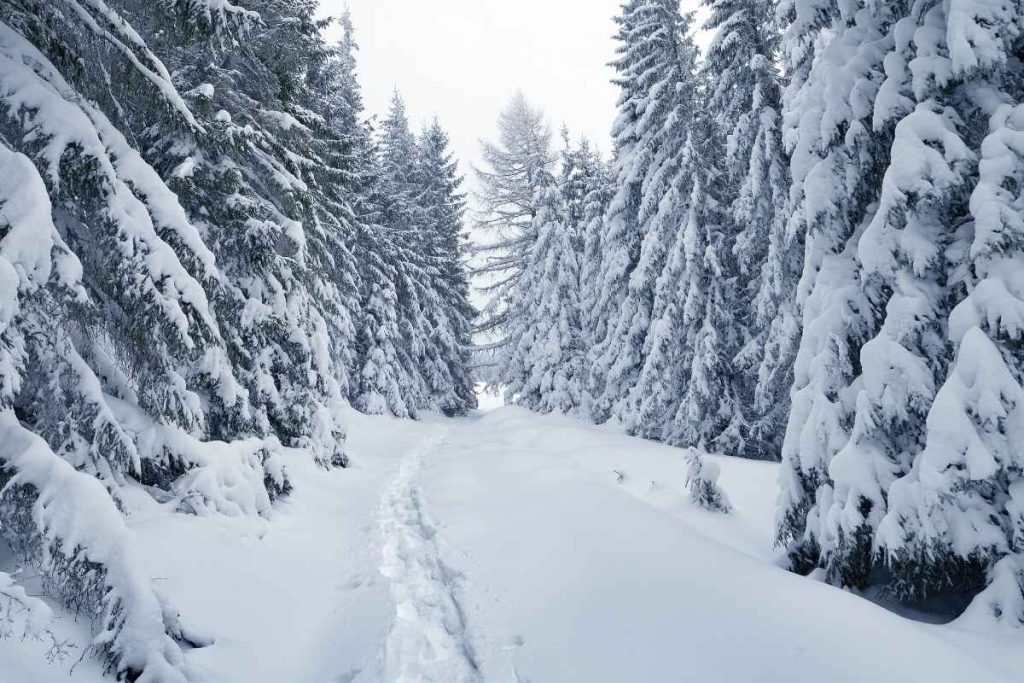
Here are some essential safety tips to keep in mind before heading out in the snow:
- Check the forecast before heading out. Winter weather can shift rapidly, especially in mountainous areas. A sunny trailhead can turn into whiteout conditions at higher elevations. Always check a reliable forecast before setting off — in the UK, the Met Office Mountain Forecasts are excellent, while in the US, the National Weather Service provides detailed regional reports.
- Watch for avalanche warnings in mountainous areas. If you’re hiking in mountainous terrain, avalanches are a real hazard. Even gentle slopes can pose risks after heavy snowfall. Check avalanche forecasts in advance (Avalanche.org in the US, or Scottish Avalanche Information Service in the UK). If conditions look unstable, choose a safer route.
- Layer your clothing to manage heat and moisture. Your boots keep your feet protected, but your body needs attention too. As a rule of thumb you can follow the layering principle: apply a base layer for moisture wicking (avoid cotton), a mid layer with insulating fleece or wool and finally an outer layer that’s waterproof and windproof. This way, you can adjust easily as conditions (and your activity level) change.
- Keep your feet dry — Wet feet in cold weather can lead to frostbite quickly. Always carry spare socks and, on longer hikes, consider swapping into dry socks halfway through. Remove insoles at rest stops to let them breathe. For more on this, see our guide on How to Make Hiking Boots Smell Better, which also covers drying methods that work in the field.
- Use traction devices — Even the best hiking boots struggle on ice. Microspikes, crampons, or snowshoes give you the stability you need. Carry them in your pack and put them on when you hit slick terrain — slips and falls are among the top causes of winter hiking injuries
- Keep hydrated and fueled — Cold weather reduces thirst cues, but your body still needs water. Carry an insulated bottle to prevent freezing, and pack calorie-dense snacks (nuts, chocolate, dried fruit) for quick energy.
- Carry emergency gear — At minimum, pack a headtorch, map/compass (or GPS), first-aid kit, emergency blanket, and a whistle. A small thermos with a hot drink can also be a morale booster and a way to help regulate body temperature.
For more skills, see the British Mountaineering Council’s Winter Skills page.
Final Thoughts
Winter hiking is one of the most rewarding ways to experience the outdoors. Trails you’ve walked countless times suddenly feel new under a blanket of snow, the air is sharper, and the stillness is unforgettable. But the right footwear is the line between a magical day out and a miserable (or even dangerous) one.
So, are hiking boots good for snow?
Yes — as long as they’re waterproof, offer enough insulation, and are paired with smart add-ons like gaiters, thermal socks, and traction devices. For light to moderate snow and milder cold, your regular hiking boots can absolutely get the job done. But in deep snow, prolonged sub-zero conditions, or multi-day winter treks, it’s worth upgrading to dedicated snow boots for the extra protection and warmth.
The key takeaway is this: choose your footwear to match the conditions, not just the calendar. A little preparation — refreshing your waterproofing, upgrading your insoles, packing microspikes — can make the difference between cold, wet feet and a safe, comfortable winter adventure.
If you’ve enjoyed this hiking boots guide, be sure to explore more of our resources here at Breathe The Outdoors:
- Do Hiking Socks Make a Difference?
- What to Do If Hiking Boots Are Too Big
- How to Make Hiking Boots Smell Better
Every good decision you make with your gear brings more comfort, more confidence, and more joy on the trail. Lace up wisely, and let the snow make your next hike unforgettable!
